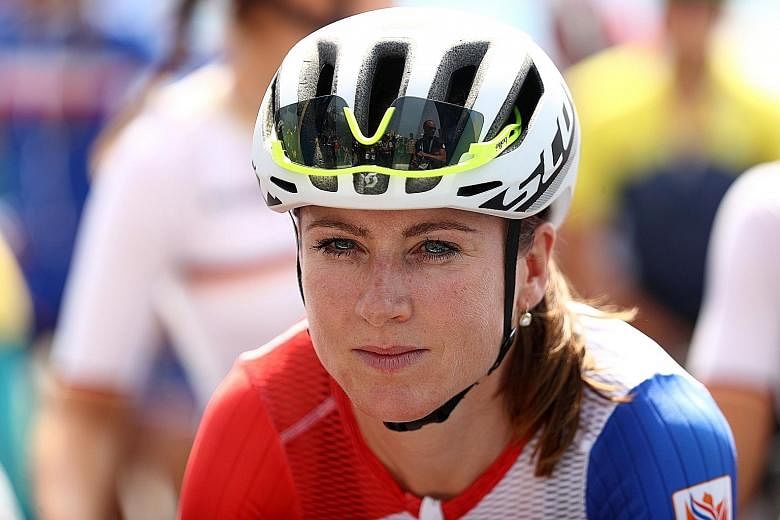RIO DE JANEIRO • The organisers of the Rio Olympics have been accused of making the cycling road- race route "dangerous" after a horrific crash involving Dutch rider Annemiek van Vleuten on Sunday.
Chris Boardman, the former British Olympic champion, was incensed by the perilous nature of the course, especially at the steep descent near the end where the race leader van Vleuten went over her handlebars at a speed of about 80kmh and landed on her head on a low wall by the side of the road.
The 33-year-old was knocked out by the impact and medical crew rushed to her aid as she lay sprawled on the side of the road.
Dutch team officials said later that she had regained consciousness and was "able to communicate", as she underwent further medical checks in hospital.
Reports on Dutch television said van Vleuten was being kept in intensive care overnight after suffering concussion and three cracks in her spine.
Overnight, she tweeted: "I am now in the hospital with some injuries and fractures, but will be fine. Most of all super disappointed after best race of my career."
Van Vleuten's compatriot Anna van der Breggen, who ended up taking gold, said: "It looked pretty bad. I thought she was dead."
The crash happened on the Vista Chinesa, the same descent where the leaders of the men's race were wiped out on Saturday, when Italy's Vincenzo Nibali suffered a broken collarbone, Colombia's Sergio Henao broke his pelvis and Australia's Richie Porte broke a shoulder blade.
A fuming Boardman, the 1992 Olympic champion, said: " I'm actually quite angry about it because I looked at the road furniture and thought nobody can crash here and get up. This was way past technical, this was dangerous, and it means people who designed the course have seen it and left it."
Cycling's world governing body UCI has moved to defend the road-race course.
It said: "The road race course was carefully designed and was extensively tested. We do our utmost to design safe, challenging courses but unfortunately crashes do sometimes occur due to a combination of factors."
Cycling was not the only sport at the Games troubled by safety concerns to its participants.
The organisers of the rowing events also came under criticism after high winds gusting across the Rodrigo de Freitas Lagoon forced the cancellation of the second day of the regatta on Sunday.
Three boats capsized over two days as waves washed over them.
There are now fears of a heavy backlog of races as the gusting conditions are likely to continue until tomorrow.
Matt Smith, the executive director of the World Rowing Federation (Fisa), said the problem was mainly with the cabling of the buoys which mark out the lanes. The lanes were curved bizarrely by the high winds.
According to Fisa, the winds were unforeseen by local experts.
However, many wondered why the lagoon was chosen. While visually stunning, its shape and geographical positioning, beneath mountains and close to the ocean, lends itself to wind, reported the Daily Mail.
British rowing legend Steve Redgrave was also unhappy that there were not enough safety boats deployed.
"There wasn't enough safety out there," he said. "If you have two boats that turn over, that is stretching it."
AGENCE FRANCE-PRESSE, REUTERS, THE GUARDIAN

